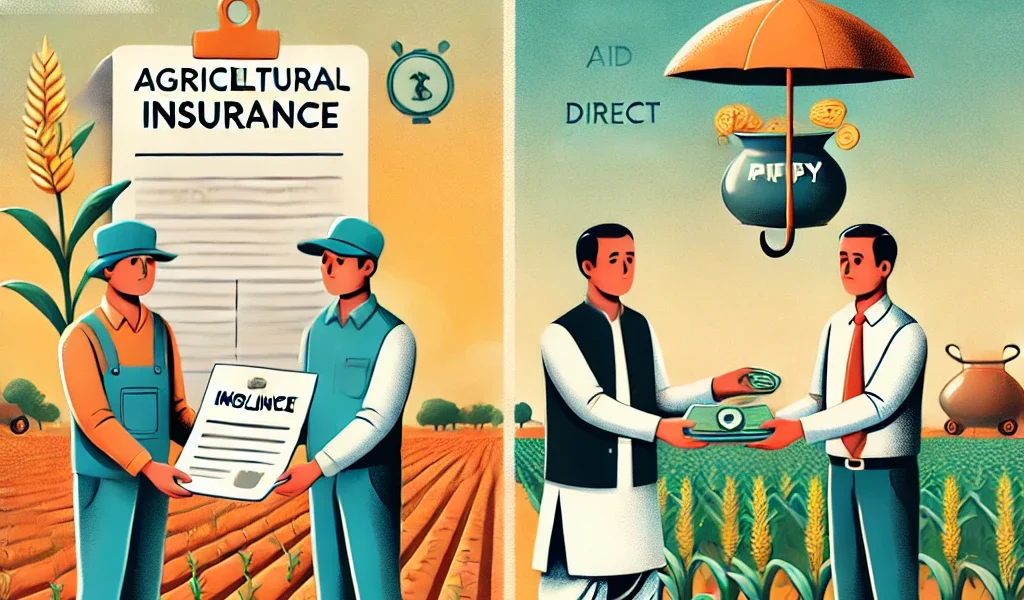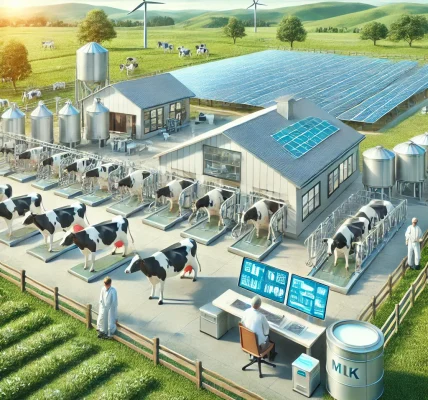Introduction
Agriculture is the backbone of India’s economy, and farmers frequently face unpredictable challenges such as natural calamities, pest attacks, and fluctuating market prices. To support farmers in times of distress, the government provides two major financial safety nets: Agricultural Insurance and Compensation Schemes. While both serve the purpose of mitigating financial losses, they function differently. In this article, we will explore how agri-insurance and compensation programs work, their advantages and disadvantages, and which option best suits farmers’ needs.
Understanding Agri-Insurance
What is Agricultural Insurance?
Agricultural insurance is a financial safety net that helps farmers recover losses due to crop failure, climate risks, and natural disasters. Farmers pay a premium to an insurance provider, and in return, they receive compensation if their crops suffer damage.
Major Government-Backed Agri-Insurance Schemes
- Pradhan Mantri Fasal Bima Yojana (PMFBY)
- Covers yield losses due to drought, floods, pests, and diseases.
- Premium rates: 2% for Kharif crops, 1.5% for Rabi crops, and 5% for commercial/horticulture crops.
- Government subsidizes the majority of the premium.
- Weather-Based Crop Insurance Scheme (WBCIS)
- Covers crop losses due to adverse weather conditions like unseasonal rainfall, temperature fluctuations, or humidity levels.
- Compensation is based on predefined weather parameters.
- Restructured National Agricultural Insurance Scheme (NAIS)
- Covers post-harvest losses in addition to pre-harvest damages.
- Provides a variety of risk coverage options.
Benefits of Agri-Insurance
- Provides financial security to farmers against unpredictable risks.
- Encourages investment in modern farming techniques.
- Reduces dependency on informal credit sources in case of crop failure.
- Ensures long-term sustainability of agricultural businesses.
Limitations of Agri-Insurance
- Delays in claim settlements due to bureaucratic procedures.
- Many farmers are unaware of the schemes or do not enroll due to lack of information.
- Requires payment of premium, which some small farmers may find unaffordable.
Understanding Compensation for Farmers
What is Compensation?
Compensation is financial aid provided by the government to farmers who have suffered losses due to unforeseen circumstances like droughts, floods, or pest attacks. Unlike insurance, compensation is usually a one-time financial relief rather than a policy-based payout.
Major Government Compensation Programs
- State Disaster Response Fund (SDRF) & National Disaster Response Fund (NDRF)
- Provides financial assistance to farmers affected by severe natural disasters.
- States can distribute funds as direct relief or rehabilitation measures.
- Pradhan Mantri Kisan Samman Nidhi (PM-KISAN)
- Provides a direct cash transfer of Rs. 6,000 annually to small and marginal farmers.
- Helps mitigate losses due to market price fluctuations or minor crop damage.
- Emergency Crop Relief Funds (State-Specific Programs)
- States like Maharashtra and Rajasthan provide direct compensation for farmers who have suffered extensive crop losses.
Benefits of Compensation Schemes
- Does not require farmers to pay a premium.
- Offers immediate relief in case of major disasters.
- Helps in the rehabilitation of affected farmers.
Limitations of Compensation Schemes
- Often delayed due to administrative hurdles.
- The amount provided is usually not sufficient to cover actual losses.
- Distribution can sometimes be politically influenced, leading to inconsistencies.
Comparison: Agri-Insurance vs. Compensation
| Feature | Agri-Insurance | Compensation |
|---|---|---|
| Eligibility | Requires prior enrollment & premium payment | Provided after a disaster without prior enrollment |
| Payout Source | Insurance company & government subsidies | Government funds |
| Timeliness | Depends on claim processing time | Often delayed due to bureaucratic hurdles |
| Coverage | Covers predefined risks like weather, pests, and disease | Usually compensates for major disasters only |
| Long-Term Benefits | Sustainable solution for risk management | Temporary relief measure |
Which Option Works Best for Farmers?
- For Small & Marginal Farmers: Compensation schemes may provide immediate relief, but they do not offer long-term security. Enrolling in government-backed agri-insurance programs can help ensure financial stability in the long run.
- For Commercial Farmers: Agri-insurance is a better option as it allows them to invest in high-yield crops without fearing financial losses.
- For Farmers in High-Risk Zones: Those in regions prone to floods, droughts, or cyclones should opt for both insurance and compensation schemes for maximum security.
How to Apply for These Schemes?
Steps to Apply for Agri-Insurance
- Visit the official PMFBY website (https://pmfby.gov.in).
- Check eligibility criteria and available plans.
- Contact your nearest Common Service Center (CSC) or authorized insurance provider.
- Enroll before the last date of the season.
- Submit documents like Aadhaar card, land records, and crop details.
Steps to Apply for Compensation
- Contact your local agricultural office or revenue department.
- Submit a formal application with proof of loss.
- Officials will assess the damage and recommend compensation.
- If eligible, funds will be transferred to your bank account.
Conclusion
Both Agri-Insurance and Compensation Schemes serve different purposes and provide crucial financial aid to farmers. While compensation offers short-term relief, insurance ensures long-term stability. The best approach is to combine both strategies—opt for insurance for regular risk management and rely on compensation during extreme disasters.
Farmers should stay informed about government policies, enroll in insurance plans on time, and seek timely compensation when required. These proactive steps will ensure financial security and resilience in Indian agriculture.




